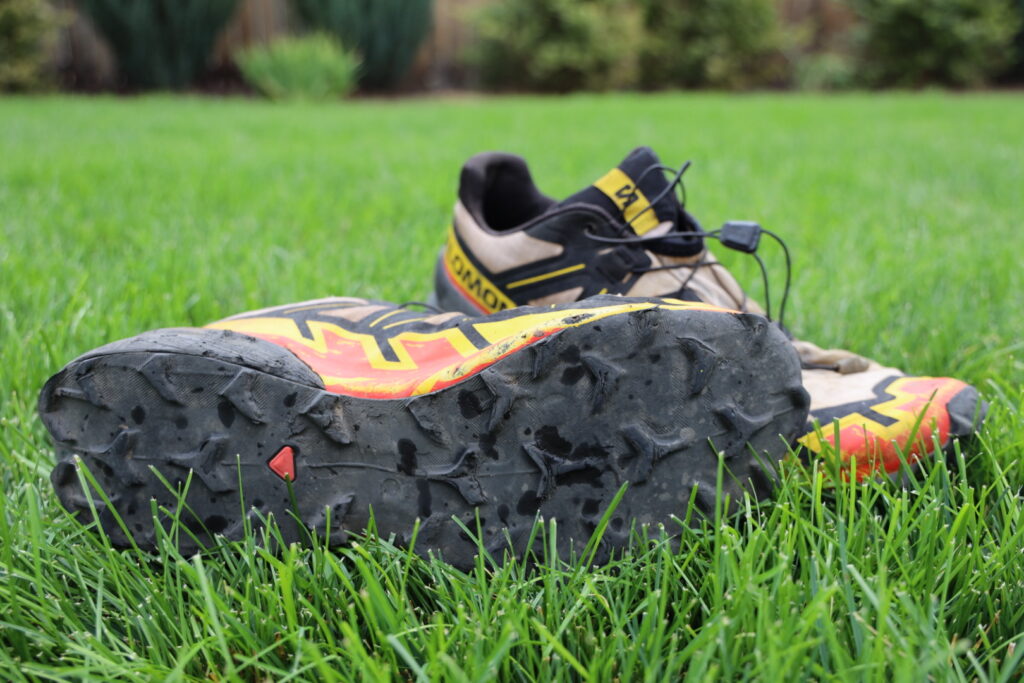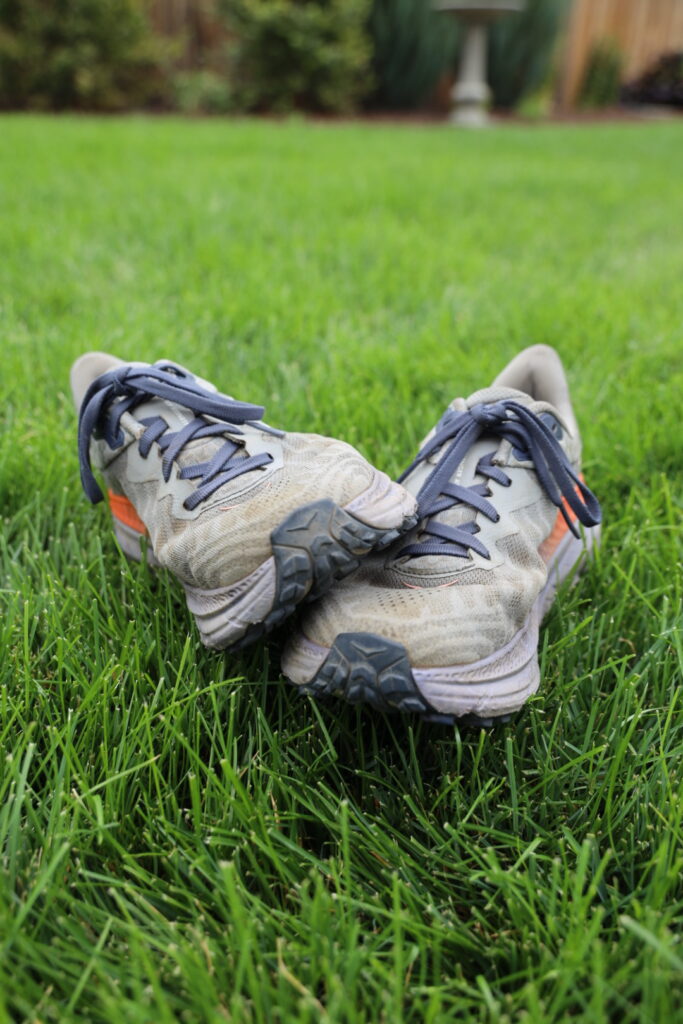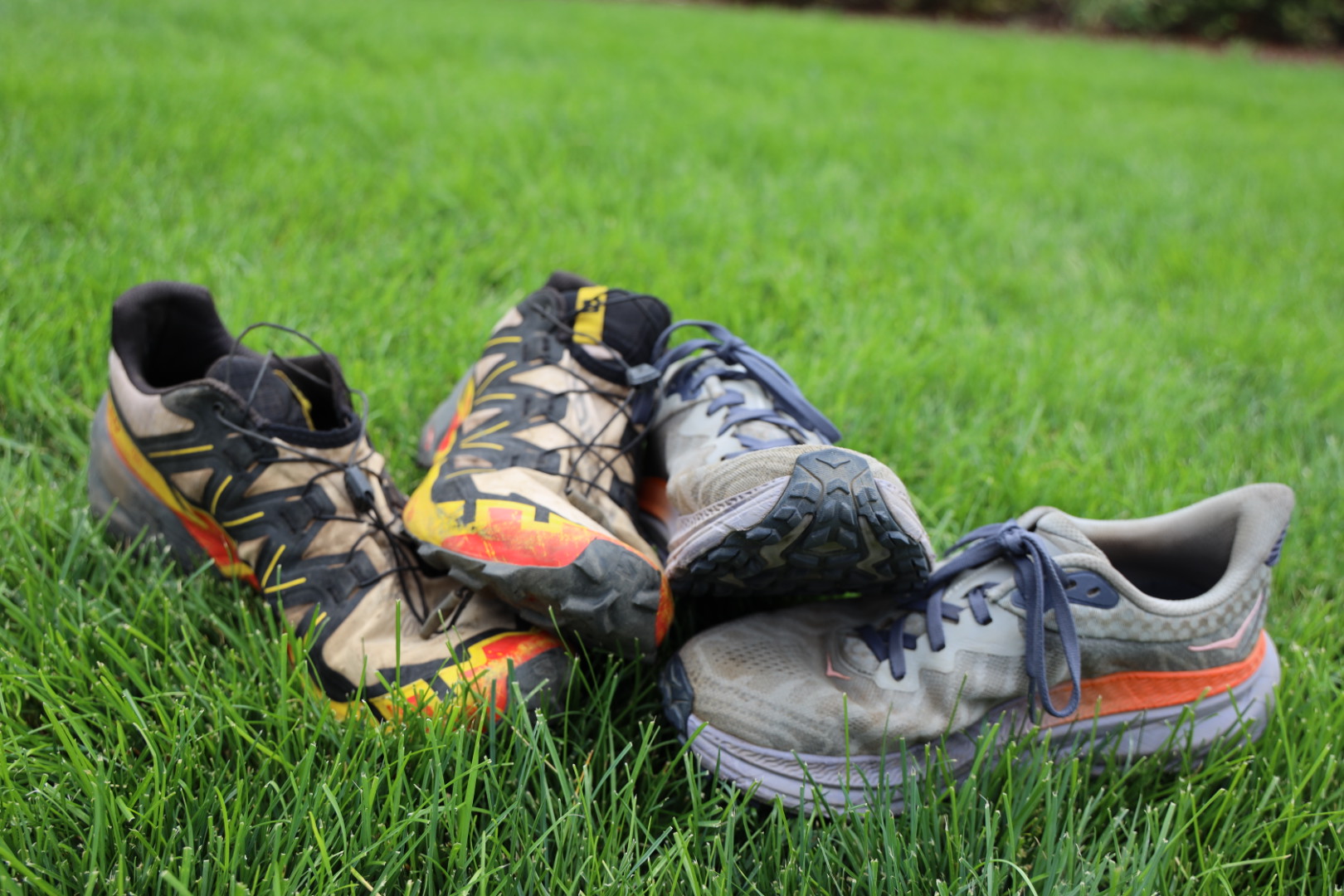After years of hitting the trails with traditional hiking boots, we made the switch to trail running shoes for our hikes—and we haven’t looked back. The difference? Lighter steps, longer days, and a surprising boost in comfort. Honestly, I don’t know why it took us so long to catch on.
Here’s why we made the change, the benefits we’ve noticed, and a few trade-offs you should know before you make the switch yourself.
Here’s why we made the change, the benefits we’ve noticed, and a few trade-offs you should know before you make the switch yourself.
1. Lightweight
The biggest reason we reach for trail running shoes is simple—they’re light. Compared to hiking boots, they shave off a surprising amount of weight from your feet, and when you’re covering miles, that adds up.
If you’ve ever had mud caked onto your shoes, you know how heavy each step can feel. Trail runners make a huge difference in reducing fatigue, letting us cover more miles with less effort. For us, that’s a win-win.
2. Comfort
Trail runners have a flexible build and a more natural feel to them. I don’t want to overhype them too much, but they’re edging into “dad shoe” comfort territory—and that’s a compliment.
They’re also ready to wear almost right out of the box, unlike hiking boots, which can have a long and sometimes painful break-in period. On warm-weather hikes, they really shine, with better ventilation that keeps feet cooler and drier.
3. Versatility
We actually started using trail runners during adventure races, and the versatility is what hooked us.
They’re a natural fit for trekking and orienteering, but they also grip well on flat pedals for mountain biking. Most are quick-drying, which comes in handy when paddling or wading through water. Once we saw how well they worked across disciplines, it made sense to use them for hiking, too.


The Trade-offs
Trail runners aren’t perfect for every hike, and there are a few things to keep in mind.
Less Support and Protection
With a low-cut design, trail runners don’t provide the ankle support of hiking boots. That can make rugged or unstable terrain trickier—especially if you’re prone to ankle injuries. They also have less toe protection, which I’ve learned to live with… despite my habit of stubbing my big toes on the trail.
Reduced Durability
Trail runners generally wear out faster than hiking boots, especially on rocky trails. Still, no footwear lasts forever, whether it’s boots, trail runners, or your favorite sneakers.
Not Ideal for Cold or Wet Conditions
While breathable and quick-drying, trail runners don’t insulate in cold weather, and most aren’t fully waterproof. In winter or heavy rain, they can leave your feet cold and soggy—yuck.
Why We Keep Choosing Them
At the end of the day, we use trail running shoes for hiking because they help us do more of what we love—explore. Their light weight and comfort mean less fatigue, which translates into longer days, more miles, and more trails packed into a weekend.
Boots still have their place, but for most of our hikes, trail runners keep us nimble and energized, making it easier to chase waterfalls, summit peaks, and wander farther into the wild. And for us, that means more than just miles—it means more adventures, more views, and more of the outdoors we came to see.

